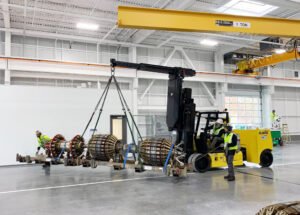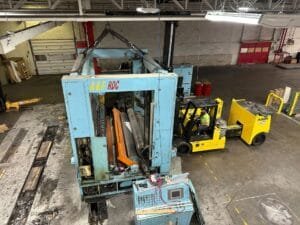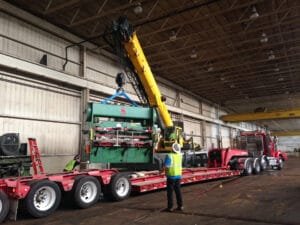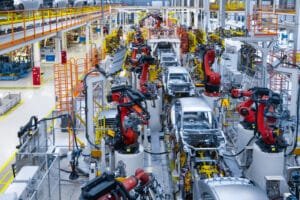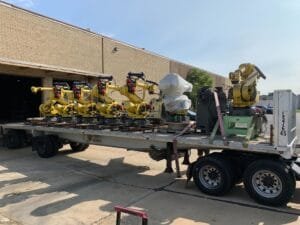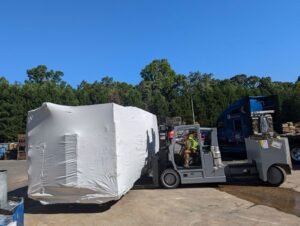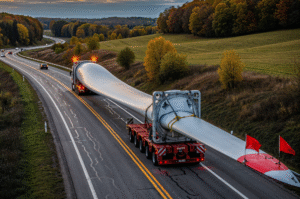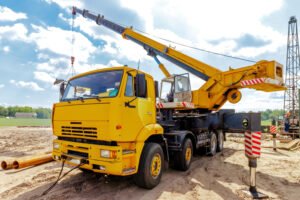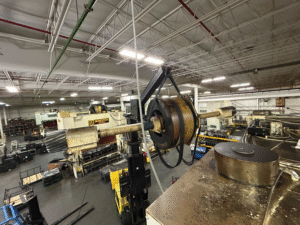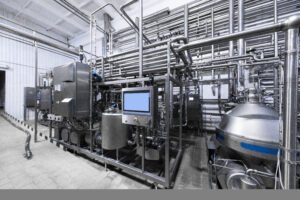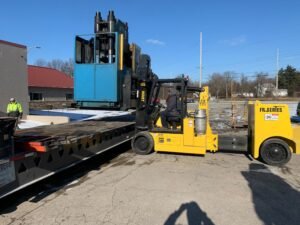Plant relocation is one of the most complex undertakings in industrial operations. Whether due to expansion, cost-efficiency, regulatory compliance, or logistical advantages, moving a full-scale manufacturing or processing plant involves significant planning, risk management, and capital investment. Unlike a typical commercial move, a plant relocation involves the transfer of heavy machinery, sensitive equipment, raw materials, support infrastructure, and technical operations—all while attempting to minimize downtime.
Understanding the total cost involved in relocating a plant is essential for budgeting, securing stakeholder buy-in, and ensuring business continuity. However, estimating the cost of such a move is not straightforward. Each relocation project is unique, affected by a multitude of internal and external factors. This article will walk you through the various elements that impact the total cost of a full-scale plant relocation and how to approach cost estimation in a way that supports project success.
The Nature of Full-Scale Plant Relocation
Relocating a plant isn’t just about packing machinery into trucks and sending them to a new address. It’s about dismantling, transporting, and reassembling an entire operational system—often across hundreds of miles or even international borders. A full-scale relocation includes:
-
Pre-move audits and engineering assessments
-
Equipment disassembly and labeling
-
Crating, rigging, and specialized transport
-
Infrastructure readiness at the new site
-
Reassembly, installation, and systems testing
-
Employee relocation or rehiring
-
Restarting production processes
Each of these stages carries its own costs, risks, and scheduling concerns. Even minor missteps in one area can cause ripple effects, increasing costs and causing delays in others. Therefore, effective cost estimation starts with understanding the scope and sequencing of the move.
Key Cost Drivers in Plant Relocation
While every relocation will have its own variables, there are several major categories that consistently impact overall costs:
1. Pre-Relocation Planning and Audits
Before any equipment is moved, there must be a complete assessment of current assets, operations, and layout. Engineering consultants, internal maintenance teams, and third-party vendors often collaborate to conduct this audit. Documentation of machinery specs, power requirements, ventilation systems, floor loads, and production line interdependencies is essential. This phase may also include feasibility studies for the new location.
Though often underestimated, planning costs can be substantial. They involve labor, data collection, consultant fees, compliance reviews, site visits, and software modeling. However, these upfront costs are critical in preventing far more expensive issues down the line.
2. Equipment Dismantling and Preparation
Machinery and electrical systems must be shut down, disconnected, disassembled, and labeled in accordance with manufacturer specifications and safety guidelines. This task is best handled by experienced millwrights, riggers, and electricians. Improper dismantling not only poses safety risks but can also result in equipment damage or voided warranties.
Some equipment may require custom crating or padding. Hazardous materials, such as oils or chemicals, must be drained and disposed of following environmental protocols. Additionally, time must be spent removing dust, contaminants, and residue before equipment is packed—especially for food, pharma, or cleanroom environments.
3. Rigging and Transportation
One of the most costly and technically demanding aspects of plant relocation is rigging and transportation. This includes loading equipment onto flatbeds or trailers, using cranes or forklifts, securing permits for oversize or overweight loads, and managing transit logistics. Routes may need to be surveyed, bridge clearances verified, and traffic controls coordinated with local authorities.
High-value or delicate equipment may need shock-absorbent packaging, escort vehicles, or climate-controlled transport. For international relocations, there are also customs declarations, duties, taxes, and potential warehousing costs at ports or depots. Transport costs are significantly affected by distance, equipment weight, road conditions, and required escort services.
4. Permits and Legal Compliance
Relocating a facility is not just a logistical project—it’s also a legal one. Federal, state, and local regulations may affect everything from environmental clearances to building codes. Permits may be required for:
-
Modifying utilities at the new site
-
Installing new infrastructure
-
Complying with zoning or noise ordinances
Failure to obtain proper permits or comply with local laws can lead to costly delays, fines, or even project shutdowns. Legal consultants or permitting specialists are often brought in to expedite and manage this aspect of the move.
5. Infrastructure Development at New Site
The readiness of the new location plays a critical role in overall relocation costs. If the new plant site requires extensive renovation, reinforcement, or customization to accommodate the incoming equipment, the cost can balloon. Necessary upgrades might include:
-
Electrical reconfiguration
-
HVAC and ventilation systems
-
Floor reinforcement for heavy loads
-
Plumbing or compressed air systems
-
Network and IT infrastructure
Additional costs may arise from installing racking systems, conveyor belts, safety features, and internal logistics systems. If the facility isn’t prepared in time, relocated machinery may need to sit idle—causing further losses.
6. Installation and Recommissioning
Reinstallation of equipment is not merely reversing the dismantling process. Machines need to be calibrated, aligned, and functionally tested. Production workflows are reestablished. This often includes collaboration between internal engineers, OEM technicians, and contractors. Installation timelines vary based on equipment complexity, factory layout, and availability of parts or documentation.
Downtime during this phase is critical. Each day of halted production translates into lost revenue and disrupted supply chains. Effective coordination can reduce these losses, but tight timelines may require overtime pay or expedited shipping, both of which increase total costs.
7. Downtime and Productivity Losses
Perhaps one of the most significant—yet hardest to quantify—costs of a plant relocation is the loss of productivity. Even with meticulous planning, some downtime is inevitable. This might include:
-
Interruptions to assembly lines
-
Delayed order fulfillment
-
Temporary layoffs or reduced workforce utilization
-
Increased maintenance during reconfiguration
Companies must also consider the cost of customer dissatisfaction, missed deliveries, or penalties from contracts. While these losses may not appear in the relocation invoice, they do affect the bottom line.
Indirect and Hidden Costs to Watch For
Aside from the obvious direct costs, there are often hidden or indirect costs that are overlooked during initial estimates:
-
Employee relocation: If key staff are moved, costs may include moving services, housing allowances, and family support.
-
Training: New systems or layouts may require employee re-training or updated safety orientations.
-
Insurance: Moving high-value assets may necessitate special coverage.
-
Utility setup: Power, internet, and gas installation or changes may not be factored in early on.
-
Contingency buffers: Unexpected delays, damage, or regulatory issues require financial buffers.
Overlooking these items can result in serious budget overruns. Therefore, building in a healthy contingency—typically 10–20% of the estimated cost—is a best practice.
Estimating Costs Accurately: The Role of Professional Support
Because of the complexity involved, very few companies manage a full-scale relocation without external assistance. Professional industrial movers, relocation consultants, millwrights, and rigging specialists bring the expertise needed to provide more accurate cost projections and reduce financial risk. Their services may include:
-
Detailed site and route surveys
-
Engineering studies and feasibility analysis
-
End-to-end project management
-
Equipment documentation and tagging
-
Safety assessments and compliance management
-
Crating, rigging, and hauling services
Early engagement of professionals can help build a realistic relocation timeline and phased cost breakdowns, allowing for staged budgeting and approvals. Most importantly, professionals ensure that mission-critical aspects of the relocation do not get overlooked.
The Financial Planning Timeline
Effective cost estimation is not a one-time task—it’s a phased process that evolves as more information becomes available. Here’s how the financial planning typically progresses:
-
Initial Scoping and Budgeting: Based on high-level data and stakeholder input
-
Feasibility and Engineering Review: More detailed site-specific data is collected
-
Vendor Bidding and Negotiation: Quotes from contractors, movers, and suppliers
-
Final Budget Lock-In: After all permits, routes, and infrastructure needs are confirmed
-
Ongoing Adjustments: Based on real-time project developments
Regular budget reviews, cash flow tracking, and milestone-based payments are crucial to maintaining financial control during the relocation.
How Alltracon Can Help
When it comes to complex plant relocations, Alltracon stands out as a trusted partner. With decades of experience in machinery moving, heavy rigging, and industrial relocation, Alltracon brings unmatched precision and reliability to every project. Their team handles everything from disassembly to reinstallation with safety, speed, and cost-efficiency in mind. If you’re planning a plant relocation, Alltracon is the service provider you can count on for a smooth, professional transition.
Conclusion: Preparing for the Real Cost of Plant Relocation
Relocating a full-scale plant is more than just a logistics challenge—it’s a financial, operational, and strategic endeavor. While there’s no universal figure for the cost of such a move, understanding the key cost drivers and taking a systematic, phased approach to planning can drastically improve accuracy and control.
Every stage—planning, disassembly, transport, reinstallation, and restart—carries financial implications that must be addressed early and often. Hidden costs, legal factors, and operational disruptions also play a role and should never be underestimated. Working with experienced professionals, securing contingency funds, and involving cross-functional teams can help make a potentially disruptive move a successful investment in long-term growth.
By approaching your plant relocation with a comprehensive cost estimation strategy, you not only protect your budget—you lay the foundation for future operational excellence.


